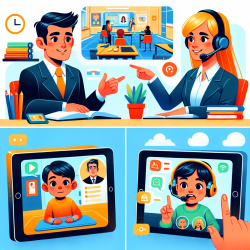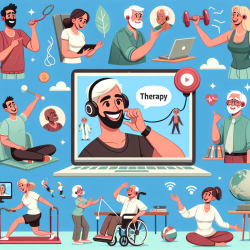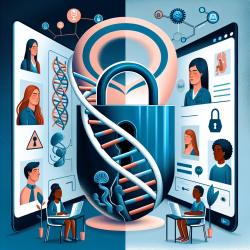In today's rapidly evolving educational landscape, school counselors face unprecedented challenges. Among these is the need to provide effective support to students, often with limited resources. Enter virtual therapy—a game-changer in the realm of school counseling.
Virtual therapy, also known as teletherapy, leverages technology to connect students with licensed therapists remotely. This approach not only addresses the logistical hurdles of in-person sessions but also offers numerous benefits that can significantly enhance the well-being and academic success of students.
Why Virtual Therapy Works
Several factors contribute to the efficacy of virtual therapy in schools:
- Accessibility: Virtual therapy eliminates geographical barriers, making it easier for students in remote or underserved areas to access quality mental health services.
- Convenience: Sessions can be scheduled flexibly, reducing the need for students to miss important class time.
- Comfort: Many students feel more at ease in their own environments, which can lead to more open and effective communication.
- Resource Optimization: Schools can maximize their resources by integrating virtual therapy into their existing counseling programs, allowing for more comprehensive support without additional staffing burdens.
Data-Driven Success
Research supports the effectiveness of virtual therapy. Studies indicate that teletherapy can be just as effective as in-person sessions for a variety of mental health issues, including anxiety, depression, and behavioral problems. Data-driven approaches ensure that interventions are tailored to meet the unique needs of each student, fostering better outcomes.
For example, a study published in the Journal of Child Psychology and Psychiatry found that children receiving online cognitive-behavioral therapy (CBT) showed significant improvements in anxiety and depression symptoms. This underscores the potential of virtual therapy to provide high-quality care in a convenient format.
Implementing Virtual Therapy in Schools
Integrating virtual therapy into school counseling programs involves several steps:
- Assess Needs: Evaluate the specific needs of your student population to determine the most appropriate virtual therapy services.
- Select Providers: Partner with reputable teletherapy providers, such as TinyEYE, to ensure access to licensed and experienced therapists.
- Train Staff: Provide training for school counselors and other staff to effectively integrate virtual therapy into their existing programs.
- Monitor Progress: Use data-driven tools to track student progress and adjust interventions as needed.
The Future of School Counseling
As we move forward, the integration of virtual therapy into school counseling programs is poised to become a standard practice. By leveraging technology, schools can provide more comprehensive, accessible, and effective support for their students, helping them to achieve their full potential.
At TinyEYE, we are committed to supporting schools in this transition. Our online therapy services are designed to meet the diverse needs of students, providing them with the tools and support they need to thrive. To learn more about how we can help your school, visit our website or contact us today.










